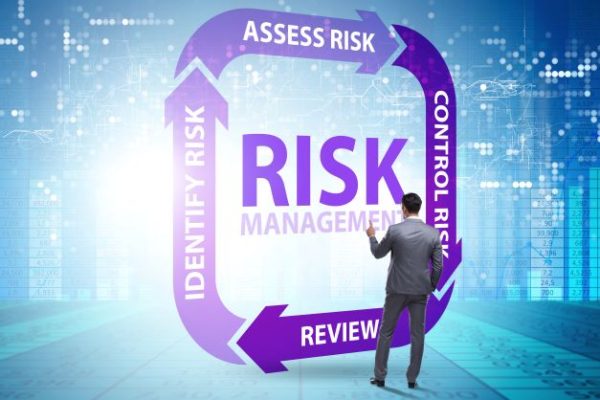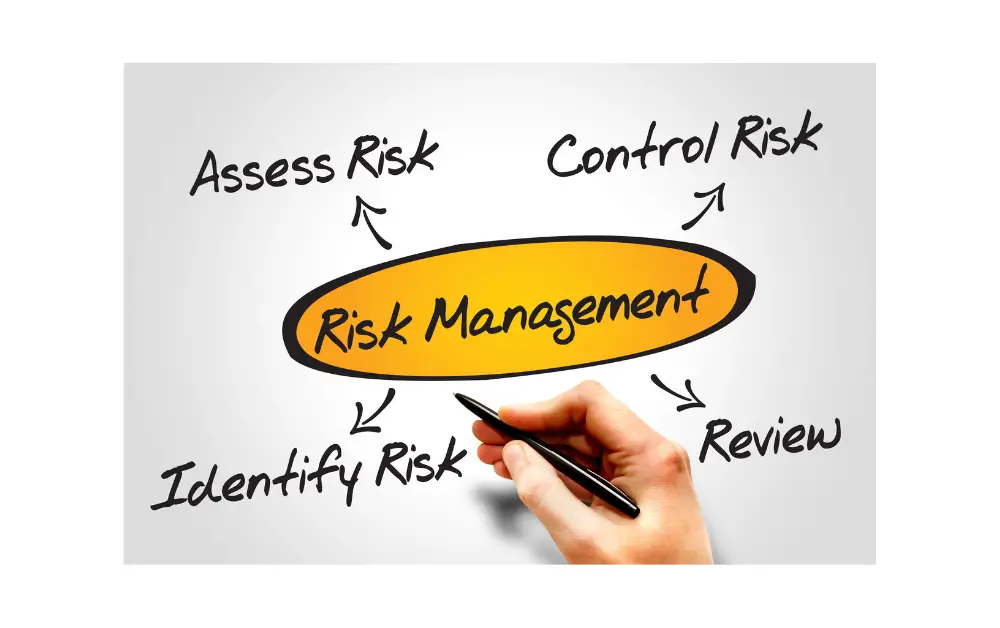A successful software project risk management strategy begins with identifying potential risks and then taking action to reduce their likelihood of occurrence and/or impact. Project risks are an unavoidable part of any software project, but with proper risk management practices in place, they can be minimized and dealt with effectively. It is therefore important to have a project risk management plan in place to deal with them when they arise.
Software project risk management is critical to the success of any software development project. By understanding and managing the risks associated with a project, you can avoid costly and frustrating surprises down the road. In this article, we’ll discuss what risks are, how to identify them in your project, and strategies for mitigating them. We’ll also take a look at some tools and resources that can help you manage risk effectively. So read on to learn everything you need to know about software project risk management!
What is Risk Management in Software Project Management?
Risk management involves the process of identifying risks and identifying or mitigate those that may hinder your achievement of the goals. Increase opportunities and outcomes. In software projects, risk management process is a tool to manage and protect digital products. In the software projects ,the risk manager role consists of projects and product ownership.
Risk management aims to minimize potential difficulties affecting projects timeline and cost. we can also allude a risk as anything that could affect the personnel and processes of projects.
Project risk management involves the detection, analysis, and responses to all risks affecting the project lifecycle to ensure that the plan remains on schedule and meets the intended objectives.
Risk management is not reactive and it needs to include planning processes for determining the possibility of risk in the software project. All activities in software development process inherently have risks. Typically, a threat relates to unforeseen situations and can affect the cost of an upcoming project. Risk is possible and when they become real they become an “issue” involving project management.

What are the Main Objectives of Software Project Risk Management?
Software projects usually involve implementing innovative features and using advances in software. Aside from technological advancement, the vulnerability in software systems is also growing. In fact, the risk of software failures is growing. Risk refers to the possibility that the software could lose its functionality. These can be caused by several unwelcome events like schedule delays and incorrect cost estimations, termination failures.
The main objectives of software project risk management are to identify, assess, and prioritize risks to software projects.
Software Development Project
Software development projects require a team of developers to work together to create a software. The team must use project risk management tools to identify and mitigate risks throughout the software development process. There are many different software development methodologies, and the development team must choose the one that best fits the project requirements. The team will also need to determine how to test the software to ensure it meets the Quality assurance standards.
Risk Management Strategies
Risk management is the process of identifying, assessing, and mitigating risks to ensure that project objectives are met. It is an essential part of the project management process, as it helps to ensure that the project stays on track and within budget. There are several key steps in the risk management process, including risk identification, assessment, and mitigation.
The first step is to identify potential risks that could impact the project. This can be done through a variety of means, including interviews, surveys, and workshops. Once potential risks have been identified, they must be assessed in order to determine their impact on the project. Finally, once risks have been identified and assessed, mitigation strategies must be put in place to reduce their impact. Common risk mitigation strategies include changing the scope of the project, modifying the schedule, or increasing the budget.

How to Deal with Project Risk Management in Software Development?
All digital devices — regardless of industry — carry risks with them. When looking for a new venture, you must always be careful of potential risks in your project management. This includes market risk, financial risk resulting from natural disaster or a combination of all. In the software development phase the project must therefore take into account the needs of the user and potential problems which may emerge from the design of the product.
Risk Management Process in Software Projects
Managing risks is an important part of any software project. The risk management process helps identify potential problems early on, and allows project managers to put mitigation strategies in place to reduce the impact of those risks. There are four key steps in the risk management process: identification, assessment, prioritization, and mitigation.
The first step is to identify risks. This can be done by looking at previous projects, talking to stakeholders and experts, and analyzing the project itself. Once potential risks have been identified, they need to be assessed. This involves looking at the probability of the risk occurring, and the potential impact it could have on the project. risks that have a high probability of occurring and/or a high potential impact should be given priority.
Once risks have been identified and prioritized, mitigation strategies can be put in place. These might include changing the way the project is being run, bringing in additional resources, or increasing communication with stakeholders.
How to manage risk using ProjectManager?
In order to manage risk, it must begin by clearly and accurately defining what you’ll need the project to achieve. Write a detailed and comprehensive plan for achieving the project goals. Risk is identified at all phases. If your team can identify potential risks, you should start engaging them immediately. The use of ProjectManager software is crucial for managing risk.
Do not be afraid to involve others in the identification and planning of risk. Most managers simply send out emails to their project team asking for information about what is going wrong with a particular project.
How to perform software risk assessment?
Software Risk Management consists of two steps. Risk evaluation and risk management. You must follow these steps in order to assess your risks. Risk Control consists of activities including risk management plans, management monitoring and a final risk management process.
It is essential to identify and prioritize potential vulnerabilities proactively during software development, through conducting regular risk analyses. Let’s look at risk assessments.

Risk exposure estimation
Calculating the risk of software projects can help identify how big a risk your software projects face. This risk analysis process reflects two factors. Generally used for the estimation of sensitivity risk if risk levels exceed 5%.
Risk Exposure = Probabilities of risk occurring, percentage = Effects on the time of loss. 80% of clients insist new features of products affect product delivery and that may impact product sales. If our estimate is 5 weeks, the risks are assessed at 0.50 = 5 weeks. Estimating time and loss impacts is generally less expensive.
Software development risk factors
If software product managers are unsure if the product development schedule will have unrealistic deadlines, the project will have a delayed deadline. These could also consist of missing critical projects and underestimating effort and the final product size. Organizational risks can be inefficient when managers are directing projects.
Projects have a lag time as the decisions are taken and approved at a later stage. Layoffs in an organization, reduced budgets and poor project management may also affect the development of software products.
Prioritization of risk
A risk event is likely to be low, moderate or large. The same risks can cause serious life situations, or cause significant delays or tolerability delays, or are very small. The risk priority determines the chance that risks occur and the consequences. Prioritizing software risk helps you reduce your technical team’s risk effectively. The Hazard situation will be identified and immediate action needed.
Risk analysis
Analysis of the identified risk is conducted based upon previous projects knowledge (other reasons you need skilled engineers). Generally, project management teams must estimate risks resulting in the possibility that the risk may occur.
Estimation Risks
Poor estimation based on costs and time can often result in unsafe delivery of software.
Technical risks
They are usually caused by software or hardware technology used for software development.
Requirements Risks
Changing customer requirements may pose risks to software products.
Different types of identified project risks
No project will be completely riskless. The risks can be identified using methods and tools, such as risk management strategies and project risk management, to detect, mitigate the threat.
Doing the risk management step-by-step
The breakdown of risk management into shorter stages aims to make the task plan easy. This technique is applied using Agile, and Sprint to regularly review completed software. It allows us to further improve project administration and understand the digital product, which will eventually lead us towards lasting and appropriate outcomes.
In addition, MVPs are an excellent illustration of small step techniques. This is a basic version of an product containing only basic functionality. It also allows us to test and launch our app to targeted users.
Other external risks
Some project risks may come through to clients, including unclear requirements, last-minute changes to development stages and communication difficulties. Some tasks are delayed due to this circumstance affecting the upcoming sprints.
A further problem with communicating can be affecting a team’s work performance and may delay the launch of a new app.
Internal & external risks
Communication links to engagement, which is important in software development. And this is largely partisan as it involves everyone who has contributed to the project — developers, designers, producers, stakeholders, and most importantly, clients. If there is no engagement then this is an issue. on the other end the role of the Product Owner consists of supporting, interacting and assisting the team and everyone involved with the product development. Creating an effective digital product takes the utmost effort.
Updated policies of external providers for different countries.Depending on experiences the developer may want to enlist the help of an external company, evaluating potential risks and talking to the team whose work has been performed previously. It helps to understand what is potentially problematic and the possibilities. In addition, we can look at the worst-case scenario to see what we’ll do.
Backlog review
Usually, all of the team members and product owners take a moment to think about the backlog and the backlog tasks. They look at each task to determine whether the item is still current and does not require adjusting or updating to meet new requirements. In addition, the task is prioritized when the need arises. The session aims to keep tasks updated for the next sprint.
Keeping records of existing risks
Writing down the risks of development projects within risk management strategies, especially in long, complex projects. This can also help organizations plan better and implement risk management strategies.
How can I control Common Software Risks?
80% of respondents believe effective risk management is key to ensuring successful software development projects. Your software development team will have an advantage in eliminating the most common risks by following software design management procedures.
Challenges in Software Project Risk Management Process
Poor documentation
How do projects document their work? Minimum viable product (MVP), task description at JIRA and Confluence Project Space – this is crucial to the successful project.
A minimum amount of project documentation will help you avoid disastrous consequences. Agile principles say working software has more importance than detailed documentation”.
Nevertheless, there shouldn’t have been any doubt that documents would have no relevance to them. Use tools like JIRA Confluence, QA Touch and other tools to simplify everything.
Lack of commitment
It is important that the team is committed towards each project to make it successful. It is therefore crucial that all team members have a shared goal, understand their responsibilities and support other members.
The term “team” describes each and all stakeholders of the project – clients, project managers, developers, test team designers, and analysts. Be attentive to others in the company. Try finding the best ways of strengthening their commitment.
Lack of communication
Communication is essential for efficient working in Software development projects. How does poor communication affect our lives?.Regular meetings between teams to accomplish tasks and share knowledge gained during project activities. Everybody must fully comprehend their roles within this endeavour to be successful. Meeting outside the working environment will also improve team mood and motivation.
Failure to deliver on time
I’ve never thought of an entire project with no delays in implementation. Usually, this situation is avoided using planning techniques. It is advisable to be prepared and take all these risks at once. When planning the deadline for the project, consider every possible factor such as that. Analyses risks and advises customers. Assignment of tasks should always be determined by team members’ abilities, strengths and weaknesses.
Poor communication with the client
Does the client have no response? Has anyone tried contacting them? Clients are usually in absence from work but have not notified any team members.
Determine what sort of decision is best for a team of developers and what is left for developers to determine. Usually e-mails contain information about a client’s request and explain why delay is problematic (e.g. difficulty achieving a deadline).
Unplanned absence of a team member
Almost any team member can be absent without warning. The chances of getting sick in autumn can be high. All teams must share the same knowledge of projects in their respective fields. PM will determine whether a replacement is needed. This documentation will allow new developers a quick start.
Conclusion
In conclusion, the project risk management is key to ensuring the success of any software development project. By identifying and mitigating risks early on in the project, developers can avoid many of the common pitfalls that lead to project failure.
Furthermore, by maintaining a clear understanding of the project goals and objectives throughout the project lifecycle, developers can ensure that the final product meets the needs of the customer. By following these simple guidelines, developers can increase the chances of delivering a successful software development project.

Chris Ekai is a Risk Management expert with over 10 years of experience in the field. He has a Master’s(MSc) degree in Risk Management from University of Portsmouth and is a CPA and Finance professional. He currently works as a Content Manager at Risk Publishing, writing about Enterprise Risk Management, Business Continuity Management and Project Management.

